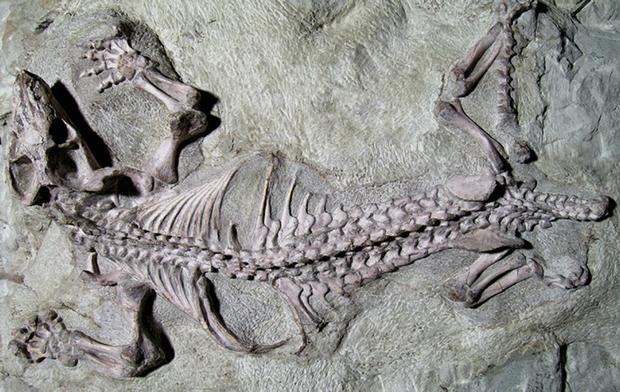The first mammals arose in the Triassic period, more than 225 million years ago. These early fur balls include small shrew-like animals such as Morganucodon from England, Megazostrodon from South Africa and Bienotherium from China. They had differentiated teeth - incisors, canines, molars - and large brains and were probably warm-blooded and covered in fur; all characteristics that stand them apart from their reptile ancestors, and which contribute to their huge success today.
New research suggests that this array of unique features arose gradually over a long span of time, and that the first mammals may have arisen as a result of the end-Permian mass extinction - which wiped out 90 percent of marine organisms and 70 percent of terrestrial species.
The researchers concluded that cynodont diversity rose steadily during the recovery of life following the mass extinction, with their range of form rising rapidly at first before hitting a plateau. This suggests there is no particular difference in morphological diversity between the very first mammals and their immediate cynodont predecessors.

Skeleton of the cynodont Galesaurus planiceps. Photo credit: Roger Smith, Iziko Museums of South Africa Social History / Natural History / Art Collections
Lead author Dr Marcello Ruta, evolutionary palaeobiologist from the University of Lincoln’s School of Life Sciences, said, “Mass extinctions are seen as entirely negative. However, in this case, cynodont therapsids, which included a very small number of species before the extinction, really took off afterwards and were able to adapt to fill many different niches in the Triassic - from carnivores to herbivores.”
Co-author Dr Jennifer Botha-Brink of the National Museum in Bloemfontein, South Africa, said, "During the Triassic, the cynodonts split into two groups, the cynognathians and the probainognathians. The first were mainly plant-eaters, the second mainly flesh-eaters and the two groups seemed to rise and fall at random - first one expanding, and then the other. In the end, the probainognathians became the most diverse and most varied in adaptations, and they gave rise to the first mammals some 25 million years after the mass extinction."
Co-author Professor Michael Benton, of the University of Bristol, UK, added, "We saw that when a major group, such as cynodonts, diversifies, it is the body shape or range of adaptations that expands first. The diversity, or number of species, rises after all the morphologies available to the group have been tried out."
Citation: Marcello Ruta, Jennifer Botha-Brink, Stephen A. Mitchell, and Michael J. Benton, 'The radiation of cynodonts and the ground plan of mammalian morphological diversity' Proc. R. Soc. B. August 28 2013 280 1769 20131865; doi:10.1098/rspb.2013.1865





Comments